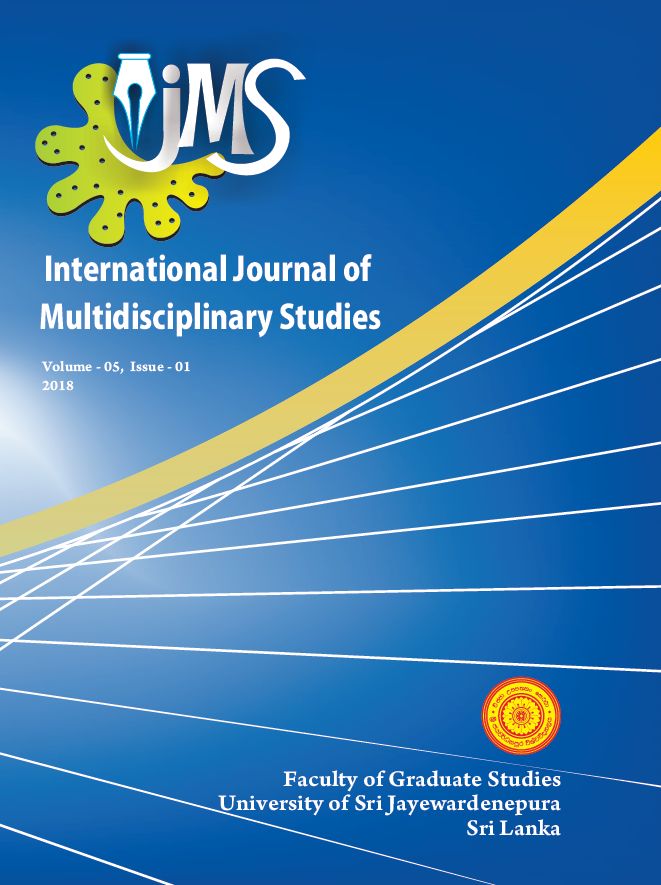Effect of Land related Factors on Smallholder Cropping Systems in Rural Sri Lanka
DOI:
https://doi.org/10.31357/ijms.v5i1.3894Abstract
There are marked differences between the Wet and Intermediate Zones of Sri Lanka in the type of crops selected and cropping practices used by smallholder farmers. This study was specifically geared to i) identify the major smallholder cropping systems in the study area, ii) analyze the relationship between land size and cropping intensity, and iii) to determine how land size, land ownership, proximity to land from the homestead influences the selection of different cropping systems. Data and information were collected from a sample of 96 households in the four selected villages representing each from Kalutara, Kegalle, Moneragala and Hambanthota districts using semi structured interviews, direct observations, case studies and farm sketches. Data were analyzed using a variety of statistical methods including chisquare and general linear model. The study found that the allocation of land for the selected crops was lower in the villages of Kegalle and Kalutara districts compared to the Moneragala and Hambanthota. The study also ascertained that an increase in land size resulted in a decrease in the number of crops grown and cropping intensity in home gardens and rubber smallholdings. Also lower priority was given to intercropping of rubber smallholdings by farmers owned with more than 2 acre of land available, and vice versa. The income level of the household had a considerable influence on several factors including, selection of cropping systems, size of land holding, and allocation of land to different crops. Variation in land ownership between villages had a significant effect on the establishment of crops (p<0.001) i.e. owner-cultivated smallholdings comprised a mixture of many short term and permanent crops while tenant cultivated smallholdings consisted solely of short-term crops. Distance of the land from the homestead had a significant effect on the selection or non-selection of cropping systems. Consequently, crops with less risk and maintenance were grown further out from homestead (e.g. citronella) and rubber compared to banana and tea. Similarly, the form of land smallholdings consisted of a mixture of intercrops (including other permanent crops), and soil protection methods were practiced, whereas tenanted farms had seasonal intercrops with less attention paid to soil protection and improvement.
KEYWORDS: Land ownership, Proximity, Land size, Smallholders, Cropping systems

